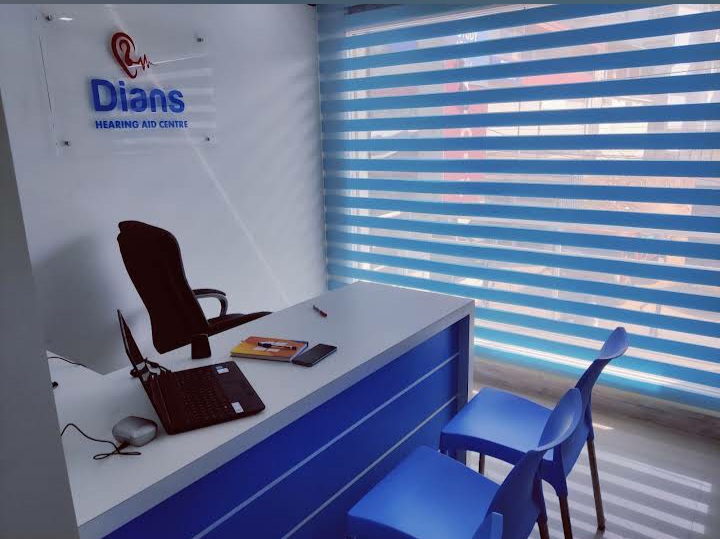Dians Hearing Aid Centre
Dians Hearing Aid Centre, Sathramkunnu Road, Opposite SBI Bank, Sultan Bathery, Wayanad, 673592
Since : 2020
Dians Hearing Aid Centre, Sathramkunnu Road, Opposite SBI Bank, Sultan Bathery, Wayanad, 673592
Since : 2020
Pure Tone Audiometry Test is a standard hearing assessment procedure used by audiologists to measure hearing sensitivity across various frequencies. This test helps determine the degree, type, and pattern of hearing loss, which is critical for effective diagnosis and treatment. In Wayanad, residents have access to professional audiology centers offering this essential hearing evaluation service for all age groups.
Pure Tone Audiometry Test, often referred to as PTA, involves presenting a series of pure tones at specific frequencies to the patient through headphones. The patient responds whenever they hear a tone, allowing the audiologist to measure the softest sounds detectable at each frequency. These results are recorded on an audiogram, which visually maps the hearing thresholds for both ears. The test is painless, non-invasive, and provides reliable information about auditory health.
Tone audiometry is a fundamental test used by audiologists to evaluate an individual’s hearing ability. It helps identify the degree and type of hearing loss, enabling professionals to recommend appropriate treatments or hearing devices. This test is widely used across clinics and hearing centers to ensure accurate diagnosis and effective hearing care.
Tone audiometry, also called pure-tone audiometry, measures how well a person can hear sounds at different pitches and volumes. During the test, patients wear headphones and respond to a series of tones by signaling when they hear them. The results are recorded on an audiogram, which provides a visual representation of hearing thresholds.
The test evaluates both ears individually across a range of frequencies, from low-pitched sounds to high-pitched ones. By determining the softest sounds a person can detect at each frequency, audiologists can identify patterns of hearing loss. These patterns help distinguish between sensorineural, conductive, and mixed hearing losses, guiding further treatment plans.
Tone audiometry, also called pure-tone audiometry, is a standard test used to measure a person’s hearing ability. It helps identify the degree and type of hearing loss by evaluating how well a person can hear sounds at different frequencies and volumes. During the test, soft tones at various pitches are played through headphones, and the patient indicates when they can hear each sound. This process allows audiologists to map hearing sensitivity and detect hearing problems early.
During a tone audiometry session, the patient typically sits in a soundproof room to ensure accuracy. Headphones are placed over the ears, and a series of tones ranging from low to high frequencies are played. The patient responds, usually by pressing a button or raising a hand, whenever they hear a sound. Each ear is tested separately to measure the hearing threshold. The results are plotted on an audiogram, a graph that shows the softest sounds the person can hear at each frequency, helping audiologists determine the severity of hearing loss.
Tone audiometry is a crucial step in diagnosing hearing loss and deciding on treatment options, such as hearing aids or other interventions. It is widely used for children, adults, and elderly patients. For children, early testing can guide the selection of pediatric hearing aids, ensuring proper speech and language development. For adults, tone audiometry helps in choosing the right hearing aid model, whether from Phonak, Signia, Oticon, or Widex, based on the type and level of hearing loss. Regular audiometric testing also helps monitor changes in hearing over time, ensuring timely adjustments to treatment.
Tone audiometry is a non-invasive, painless, and highly effective diagnostic tool. It allows early detection of hearing impairments, which is crucial for improving quality of life. For children, it can detect hearing issues that might affect language development, while adults benefit from timely intervention for age-related or noise-induced hearing loss. This test also supports accurate fitting of hearing aids and other assistive listening devices.
Tone audiometry is a reliable method for identifying hearing loss at an early stage. By measuring the softest sounds a person can hear across different frequencies, audiologists can detect even mild hearing impairments. Early detection is especially important for children, as it allows for timely intervention with pediatric hearing aids, which supports proper speech and language development.
This test provides precise information about the type and severity of hearing loss, helping audiologists recommend the most suitable treatment. Whether it’s a Phonak, Signia, Oticon, or Widex hearing aid, tone audiometry ensures that the selected device is perfectly matched to the user’s hearing needs. Accurate diagnosis also helps track changes over time, allowing adjustments in hearing aid settings or other therapies.
By identifying hearing issues and enabling timely treatment, tone audiometry helps individuals maintain effective communication and social engagement. For adults, it can reduce listening fatigue and enhance cognitive health, while for children, it ensures proper auditory and language development. Overall, the test empowers people to enjoy a more connected, confident, and fulfilling life with the help of appropriate hearing solutions.
·
What is the purpose of tone audiometry?
It is used to assess hearing ability and detect hearing loss by measuring
responses to different tones.
·
Is tone audiometry painful?
No, the test is completely painless and non-invasive.
·
How long does a tone audiometry test take?
Typically, the test lasts about 20 to 40 minutes.
·
At what age can someone undergo tone audiometry?
Children and adults of all ages can undergo the test, though young children may
require special techniques.
·
What equipment is used for tone audiometry?
Headphones, an audiometer, and sometimes bone conduction devices are used.
·
Does tone audiometry test both ears?
Yes, each ear is tested separately to identify any differences in hearing
ability.
·
Can tone audiometry detect all types of hearing loss?
It can identify most types of hearing loss, including sensorineural,
conductive, and mixed.
·
Do I need any preparation before the test?
No special preparation is needed; just ensure ears are clean and free of wax.
·
Are results immediate?
Yes, the audiologist can provide a preliminary interpretation immediately after
the test.
·
How often should I have tone audiometry done?
Adults should have a hearing test every few years, or sooner if symptoms of
hearing loss appear.

Wayanad, Sultan Bathery

Wayanad, Sultan Bathery
Latest Customer Reviews
"Best Oticon Hearing Aids in Wayanad"